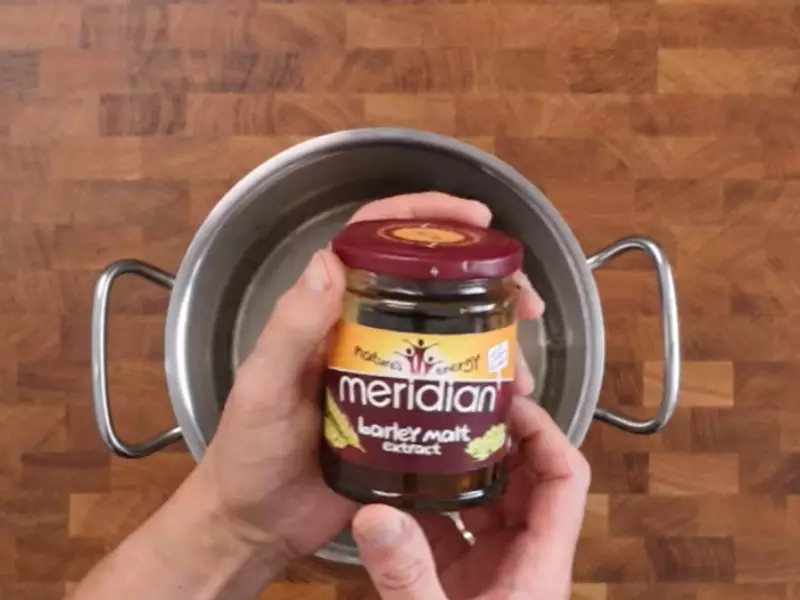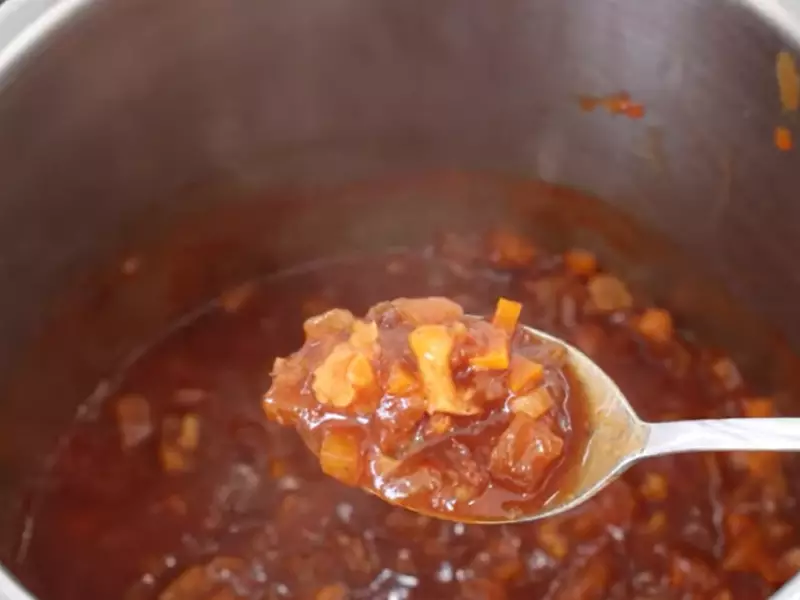Pickle and chutney are two condiments that have found their way into the hearts of food lovers around the globe. Both are essential accompaniments in various cuisines, elevating the taste of meals with their unique flavors and textures. Despite their common role as side dishes, the differences between them are substantial, stemming from their ingredients, preparation methods, and cultural significance.
The key difference between pickle and chutney lies in their preparation and primary ingredients. Pickles are primarily made by fermenting or marinating fruits or vegetables in brine or vinegar, which preserves them and imparts a sharp, tangy flavor. Chutneys, on the other hand, are a blend of fruits or vegetables, sugar, and spices, cooked down to create a thick, savory, or sweet condiment.
While pickles engage the palate with their pronounced sourness and crunch, chutneys offer a complex mix of sweet, sour, spicy, and sometimes bitter flavors, with a smoother, more spreadable texture. These distinctions not only affect how they complement food but also highlight their unique roles in culinary traditions across the world.

Origins and History
Pickle Origins
Pickles have been part of human diet for thousands of years. The ancient civilizations of Mesopotamia are credited with the first documented instances of pickling, around 2400 B.C. The primary purpose of pickling was food preservation, extending the shelf life of perishable items such as cucumbers, thereby ensuring a food supply during times when fresh produce was not available.
Geographic Spread
From its beginnings in Mesopotamia, the practice of pickling spread to Egypt, where it became a food staple. The Greeks and Romans further popularized pickles, using them for their health benefits and flavor. As trade routes expanded, pickling techniques and traditions spread across Europe and Asia, leading to a diverse range of pickling methods and flavors influenced by local ingredients and tastes.
Chutney Origins
The concept of chutney originates from India, dating back to around 500 B.C. Chutneys were developed as a way to preserve the bounty of the harvest, utilizing spices and acid to extend the shelf life of fruits and vegetables. These flavorful concoctions were used to enhance the palate and digestibility of meals.
Geographic Spread
British colonization in the 17th century introduced chutney to the Western world. The British adapted the Indian recipes, often sweetening them and reducing their spice content to suit European tastes. From there, chutney spread to the Caribbean and South Africa, where local ingredients were incorporated, creating new varieties.
Ingredients and Preparation
Pickle Ingredients
Common Ingredients
- Vegetables or fruits: Cucumbers, carrots, and green beans are popular choices.
- Brine or vinegar: Saltwater brine or vinegar acts as a preservative.
- Spices and herbs: Mustard seeds, dill, and garlic are often added for flavor.
Fermentation Process
- Clean the vegetables or fruits.
- Prepare the brine or vinegar solution.
- Add spices and herbs.
- Submerge the produce in the solution.
- Store in a cool, dark place until fermented.
Chutney Ingredients
Common Ingredients
- Fruits or vegetables: Mangoes, tomatoes, and tamarind are common bases.
- Sugar and vinegar: For sweetness and acidity.
- Spices: Ginger, cumin, and chili pepper add flavor.
Cooking Process
- Chop the fruits or vegetables.
- Mix with sugar, vinegar, and spices.
- Cook over low heat until thickened.
- Cool and store in airtight containers.
Types and Varieties
Pickle Types
Pickles come in a vast array of styles and flavors, reflecting the culinary traditions of different regions.
- Dill Pickles: Known for their tangy taste, commonly found in North America.
- Kimchi: A Korean specialty made from fermented cabbage and radishes, spiced with chili.
- Gherkins: Small cucumbers pickled in a sweet vinegar brine, popular in Europe.
Chutney Types
Chutneys also vary widely, with each region offering its unique combinations of fruits, vegetables, and spices.
- Mango Chutney: A sweet and tangy chutney from India, made with ripe mangoes.
- Tomato Chutney: A versatile chutney that pairs well with both Indian and Western dishes.
- Major Grey’s Chutney: A British creation, characterized by its sweet, savory, and mild flavor profile.

Flavor Profiles
Pickle Flavors
Pickles offer a wide range of flavors, primarily tangy and salty, with variations depending on the type of brine used and the fermentation process. The fermentation not only preserves the vegetables or fruits but also enhances their flavor, adding a unique depth that can range from mildly sour to intensely acidic.
- Description of taste: Typically, pickles have a sharp, pronounced sourness, complemented by saltiness. Some may also incorporate sweetness or spiciness, depending on the recipe.
- Influence of fermentation: Fermentation introduces lactic acid bacteria, which break down the sugars in the food, resulting in a complex, tangy flavor profile. This process can also add probiotic qualities to the pickles, contributing to their health benefits.
Chutney Flavors
Chutneys are versatile in their flavor profiles, encompassing a balance of sweet, sour, spicy, and sometimes bitter tastes. The use of spices and cooking methods plays a significant role in defining their flavors.
- Description of taste: The primary taste of chutneys can range from sweet and fruity to tangy and spicy, often all in one bite. The texture is typically smoother than pickles, making them spreadable.
- Influence of spices: Spices such as cumin, coriander, mustard seeds, and fenugreek add depth and complexity to chutneys, with sugar or jaggery and vinegar balancing the flavor with sweetness and acidity.
Culinary Uses
Pickles in Cuisine
Pickles are a global culinary staple, served alongside a variety of dishes to enhance flavor and add crunch.
- How they are served: Often served as a condiment or side, pickles complement everything from sandwiches and burgers to traditional dishes in various cuisines.
- With what: Their tangy flavor contrasts well with rich, creamy, or fatty foods, adding a refreshing bite that balances a meal.
Chutneys in Cuisine
Chutneys serve as a flavorful addition to many dishes, providing a sweet and spicy kick that can elevate the overall taste of a meal.
- How they are served: Chutneys are versatile, used as dips, spreads, or glazes for meats, cheeses, and snacks.
- With what: They pair exceptionally well with curries, rice, and bread, enhancing the flavors and adding a complex layer of taste.
Nutritional Value
Pickles
Pickles can be both nutritious and less desirable nutritionally, depending on their ingredients and preparation method.
- Health benefits: Fermented pickles are rich in probiotics, which support gut health. They are also low in calories, making them a guilt-free snack.
- Drawbacks: High in sodium, pickles can be problematic for individuals with high blood pressure or those monitoring their salt intake.
Chutneys
Chutneys’ nutritional value varies widely based on their ingredients.
- Health benefits: When made with fresh fruits, vegetables, and minimal added sugars, chutneys can be a good source of vitamins and minerals.
- Drawbacks: Some chutneys are high in sugar, which can increase calorie intake and potentially impact blood sugar levels.
Cultural Significance
Pickle
Pickles hold a special place in many cultures, often associated with traditions, holidays, and family gatherings.
- Role in traditions and meals: They are not just food items but symbols of preservation, patience, and the changing of seasons, especially in cultures where fermenting food was essential for survival.
Chutney
Chutney, with its origins in Indian cuisine, has been adopted and adapted worldwide, reflecting the diversity of global cuisine.
- Role in traditions and meals: In Indian culture, chutneys are more than just a condiment; they’re a crucial element of every meal, symbolizing the harmony of different flavors and the importance of balance in food.
Storage and Shelf Life
Pickle Storage
Proper storage is key to maintaining the quality and safety of pickles.
- How to store: Keep in airtight containers, preferably in the refrigerator, to extend their shelf life.
- Shelf life: Depending on their preparation, pickles can last from a few months to several years.
Chutney Storage
Chutneys require careful storage to maintain their flavor and prevent spoilage.
- How to store: Store in clean, airtight containers in the refrigerator.
- Shelf life: Homemade chutneys usually last for a few weeks to months, whereas commercial ones can last longer due to preservatives.
Homemade vs. Commercial
Making Pickles at Home
Home pickling is a rewarding process that allows for customization and control over ingredients.
- Differences and benefits: Homemade pickles can be more nutritious, with less sodium and no artificial preservatives, offering a fresher taste and the satisfaction of DIY.
Making Chutneys at Home
Similarly, preparing chutneys at home offers flexibility in flavors and healthier alternatives to store-bought versions.
- Differences and benefits: You can adjust sugar levels and experiment with various fruits and spices, resulting in a healthier, more personalized condiment.
Frequently Asked Questions
Can pickles and chutneys go bad?
Yes, both pickles and chutneys can spoil over time, especially if not stored properly. Pickles, when kept in airtight containers and refrigerated, can last for several months to years due to the preservative nature of vinegar or brine. Chutneys, containing less acidic content, have a shorter shelf life and are best consumed within a few weeks to months when stored in the refrigerator.
Are pickles healthier than chutneys?
The health benefits of pickles and chutneys vary based on their ingredients and preparation methods. Pickles, especially those fermented naturally, can be rich in probiotics, promoting gut health. Chutneys made with fresh fruits, vegetables, and minimal added sugars can be a healthy addition to a diet. However, the high sodium content in pickles and sugar in some chutneys should be consumed in moderation.
How do cultural significance of pickles and chutneys differ?
The cultural significance of pickles and chutneys differs greatly across regions. Pickles have been an essential method of preserving food for winter in many cultures, while chutneys, originating from Indian cuisine, serve as a staple condiment, embodying the diverse flavors of the subcontinent. Both, however, symbolize the ingenuity of traditional food preparation and preservation methods.
Conclusion
Exploring the realms of pickle and chutney reveals more than just their culinary uses; it opens up a narrative of cultural history, traditional methods, and the evolving tastes of societies around the world. These condiments, while serving the simple purpose of enhancing food, carry with them stories and practices handed down through generations.
As we savor these delicious accompaniments, it’s worth appreciating not just the flavors they add to our meals but also the rich cultural tapestry they represent. Whether it’s the tangy bite of a pickle or the complex flavors of a chutney, each has its place in the world’s culinary heritage, inviting us to explore and enjoy the diversity of global cuisine.
